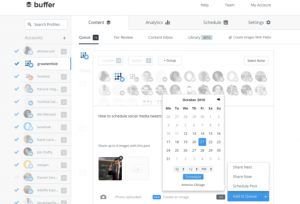Are you dreading that first completely unproductive, time wasting meeting 2016? If so, you’ve got lots of company!
Meetings that start late; run long and meander more off topic than on are unprofessional, highlight poor communication and leadership skills and a complete waste of everyone’s time.
But it doesn’t have to be that way. By making some simple adjustments, you’ll find you dread meetings less and accomplish more during the New Year!
While I offer some quick tips below, you may also enjoy Patrick Lencioni’s wildly popular book, “Death by Meeting: A Leadership Fable…About Solving the Most Painful Problem in Business.”
1. Have a Plan.
Make a personal commitment to the concept of “no agenda, no meeting.” Investing the time to outline discussion items saves everyone time. And realize having a plan doesn’t simply mean listing topics. Instead think of like your roadmap. Agenda’s should include topics; time allotments for each topic; attendee roles for each item and perhaps most importantly indicate what decisions or next steps need to be made during the meeting.
2. Share the Plan.
Congrats on taking the first step toward making your meetings more productive this year! But understand unless you share the agenda with all meeting attendees, you’ve accomplished little. Instead, make a commitment to distribute the meeting agenda 3-4 days prior to the meeting. And here’s an often ignored but supremely important tip: ask attendees to review and let you know of additional items they want to discuss. Often attendees innocently highjack a well planned meeting by going off plan. Requiring review and commitment to your published agenda will subtly keep everyone (you included!) on track.
3. Start on Time.
Benjamin Franklin once said, “Time is money.” In today’s fast paced business world, it appears more true words were never spoken. Meetings should always (did I say always?!?) start on time. The reasons are multiple but ultimately it’s just flat out respectful. Waiting 5-10 minutes for a late straggler may be polite to them, but that’s time you’ve effectively taken away from everyone else….including yourself!
4. Get the Key Players.
How often have you been in a meeting only to hear, “I didn’t realize we would need John’s team. Let’s schedule a meeting with him to discuss.” And your inner voice screams UGH!!!!! If you want to end the meeting insanity this year, before you organize (or even attend!) make sure the right players are in the room. Not sure who they are? Hop on email and send your agenda to department heads that you feel may be impacted with a quick note asking if they feel the need to send one of their resources. The reality is that they will quickly know if your scope impacts their team.
5. Limit the Size.
We’ve all been there. What starts as a meeting of 2-3 quickly becomes 10…agendas are thrown out the window and the cat herding begins! Instead, keep it small but power packed with the right folks. Make sure that absolutely (did I say absolutely?!?) every attendee has a purpose. Effective meetings include ONLY those who bring unique knowledge or decision making ability. Far too often we have three attendees who all offer the same expertise. And if you’ve been invited to a meeting and aren’t clear why, reach out to the organizer and ask what they’re hoping for you to add.
6. Watch the Clock.
Don’t you just love meetings that end with, “well we didn’t get through everything today, I’ll get another meeting scheduled to finish things up.” And your inner voice screams NO!!! Highly productive meetings have an appointed time keeper. While it may seem like a crazy concept at first blush, it’s a difference maker that will surprise you. Remember earlier I mentioned that good agendas include time blocks for each item of discussion? It’s the time keepers’ job to enforce the schedule outlined by the meeting organizer. Now admittedly, that may mean tabling some items but this ensures the entire agenda is addressed. And no matter what, make sure to protect time for the development of Action Items.
7. Set Action Plan.
Have you ever walked out of a meeting and muttered, “Well that’s 30 minutes of my life I’ll NEVER get back?” Unfortunately we all have. You’ll rarely hear (or say!) these things like this after attending meetings that close with a firm action plan. And remember, an action plan also includes future scheduling. Be it dates for deliverable completion or scheduling of next steps, setting a dateline and ensuring it’s met are the bones of productive meetings!
Not typically the meeting organizer? Well the concept of “managing up” applies to meeting invites too! Request agendas, ask why you’re needed and politely decline meetings that aren’t the absolute best use of your time.
Business & Finance Articles on Business 2 Community(58)
Report Post





